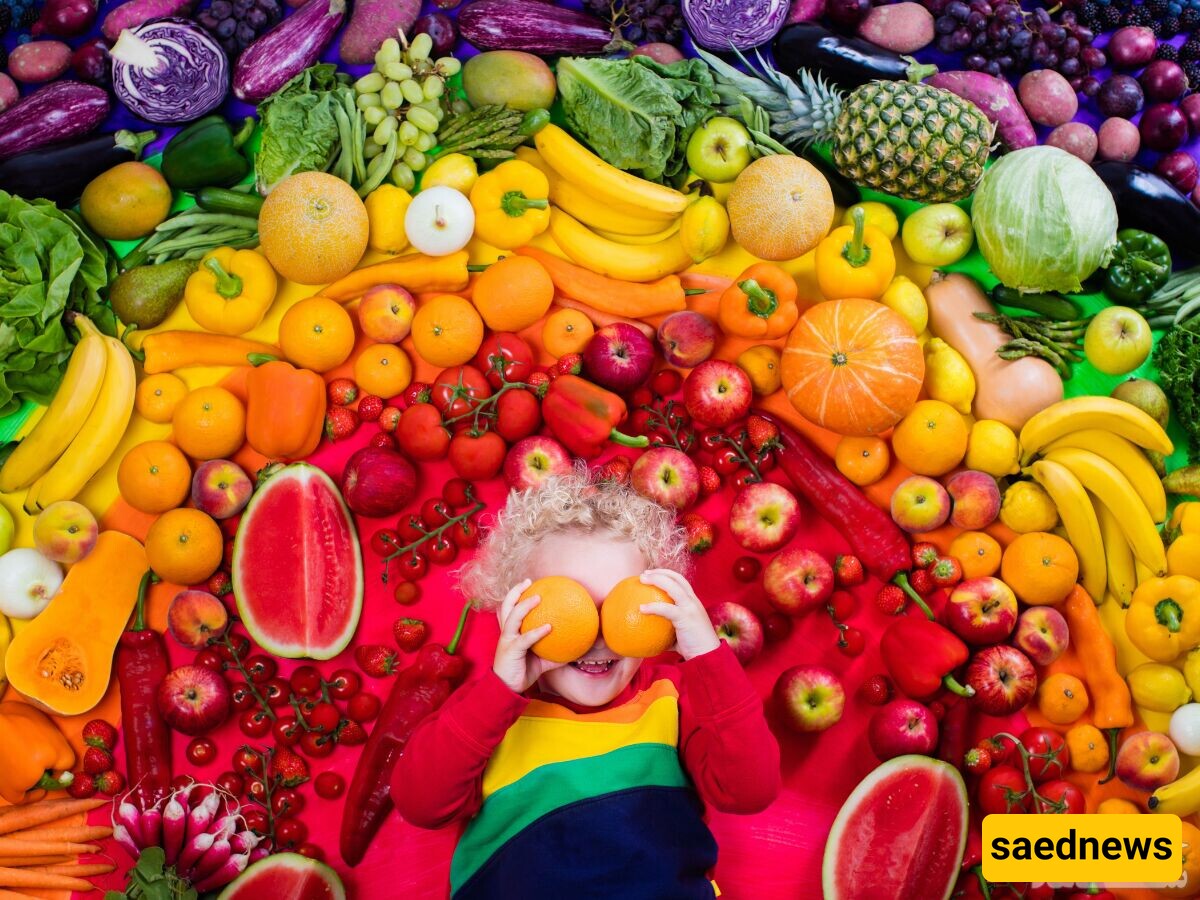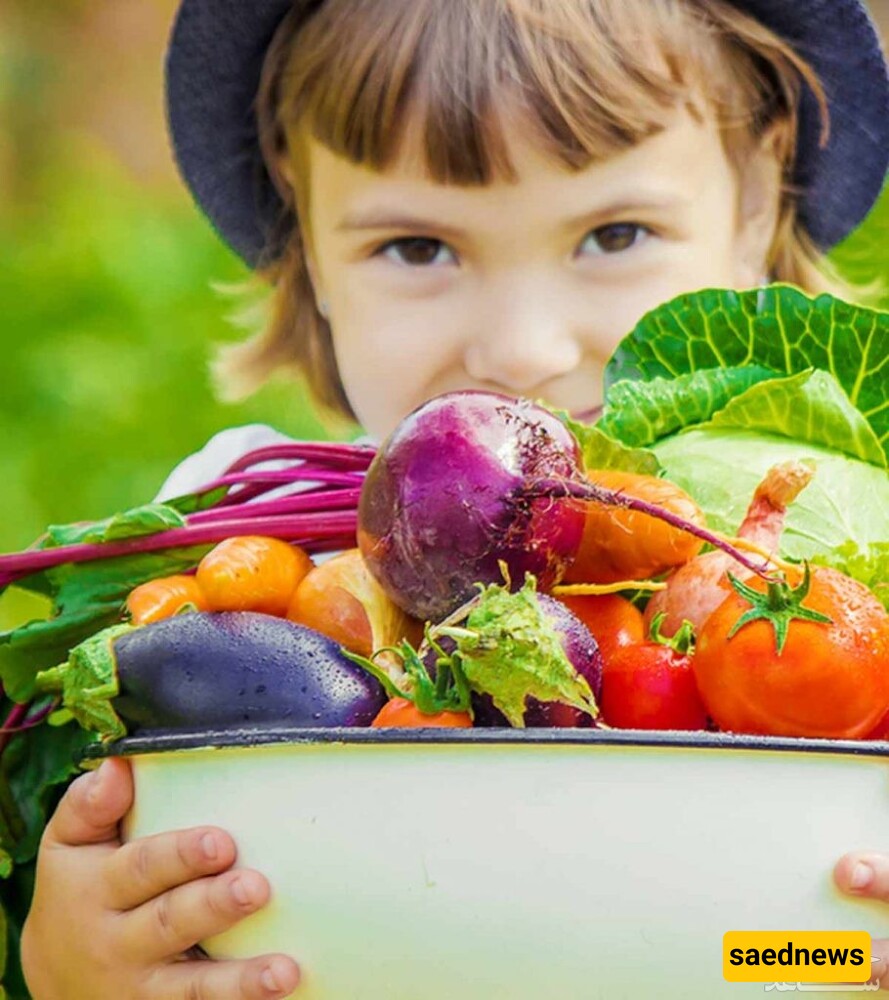Food is essential for a child's growth, so you should do everything possible to ensure they have a good diet. One of the significant factors influencing children's appetite is color. The colors surrounding children can activate or reduce hunger cues, thereby affecting their appetite.

Many children either eat too little or too much, showing little interest in food and preferring to play instead. While there are thousands of strategies to improve children's eating habits, color is also a factor that can encourage them to eat.
Scientific studies have proven that colors can affect children's appetite. Since children need proper nutrition for growth, poor eating habits and lack of appetite can lead to health issues. Treating poor eating habits is crucial, but before resorting to medication or supplements, you should try other methods. Children love different colors and attractive designs, which may help them eat better.
Parenting involves recognizing external factors that can increase or decrease a child's appetite. One of these factors is color. Researchers have found that colors influence children's immediate reactions, making food appear either appealing or unappealing to them.

The appearance of food alone can trigger responses in the brain. Neurons in the hypothalamus, the part of the brain that regulates appetite, become stimulated upon seeing food. Additionally, saliva production in the mouth increases. Therefore, the visual appeal of food significantly impacts a child's appetite. If your child is a picky eater, paying attention to food presentation is essential. Below, we discuss how different colors affect children's appetite.
Studies suggest that serving food on a red plate may reduce appetite, possibly because red is associated with warning signs. However, some studies indicate the opposite—that red can stimulate a child's appetite. Generally, people find red-colored foods appealing. This is why many popular fast-food chains use red in their logos. Thus, serving breakfast on a red plate might be a good idea.
Green is another color known to stimulate appetite. Regardless of a food's actual nutritional value, people often associate green-colored foods with health and freshness, likely due to ancestral eating habits. Both adults and children tend to view green foods as healthy and less harmful.
In color psychology, yellow is linked to happiness and has been found to stimulate appetite. When people see yellow, their brains release more serotonin, a chemical associated with positive emotions. To boost your child’s appetite, you can use yellow flowers on the dining table or paint the dining area yellow. Orange, a color similar to yellow, also creates a warm and inviting feeling.
While white foods are not the most visually appealing, they are often linked to overeating, particularly in snacks. White foods may seem harmless, but they typically have more calories and can encourage mindless eating. Additionally, eating white foods or using white plates may lead to less satisfaction after a meal.
A combination of yellow, red, and orange is highly effective in increasing appetite. Most fast-food restaurants use these colors in their branding and decor because yellow and orange trigger serotonin release, making people feel hungry. Pairing these colors with red, which is energetic and warm, significantly enhances appetite. If your child lacks interest in food, try using these colors for their plates and dining area.
Now that we understand which colors boost children's appetite, it’s important to know which ones may suppress it. Research shows that blue reduces appetite. Except for a few foods like blueberries, grapes, and eggplants, blue is not a common natural food color.
Blue: Our ancestors avoided blue, purple, or black foods because they associated these colors with toxicity. This instinct remains today. A blue light in the refrigerator, blue room decor, or blue food can reduce appetite.
Pink: Studies show that pink does not stimulate appetite because it appears unnatural and reminds people of raw meat or artificial preservatives.
Gray: Gray-colored food is entirely unappetizing. If you were served a gray dish, you would likely wonder, “How could this possibly taste good?”
Brown: Since brown resembles burnt food, it does not typically encourage eating.
Green and Blue Combination: This color mix subconsciously signals spoilage, making food unappealing. Avoid using green and blue together for children's plates or dining areas.
Green and Yellow Combination: This is the worst color pairing for a child's appetite, as it reminds people of chemicals. Avoid using this combination in your child’s dining environment.
Beyond color psychology, ensuring your child gets the necessary nutrients is a priority. With a busy lifestyle, monitoring vitamins and minerals in meals can be overwhelming. However, a simple solution is offering colorful meals filled with fruits and vegetables.
Studies show that vibrant foods, such as fruits, reduce the risk of chronic illnesses and boost children’s energy levels. Try incorporating a variety of colorful foods into your child's breakfast, lunch, and dinner. Below are some healthy foods categorized by color:
Strawberries, tomatoes, raspberries, watermelon, apples, red bell peppers, and red onions contain flavonoids, lycopene, folate, and vitamin C. These nutrients support heart health, enhance memory, and protect against chronic diseases like cancer.
Carrots, mangoes, apricots, cantaloupe, pumpkins, squash, sweet potatoes, oranges, and peaches are rich in vitamin C, which strengthens the immune system. They also contain vitamin A and beta-carotene, which improve vision.
Lemons, bananas, corn, squash, yellow bell peppers, and pineapples are high in antioxidants, which protect cells from damage and support heart health.
Broccoli, spinach, lettuce, kale, grapes, kiwis, asparagus, cucumbers, green beans, peas, and green bell peppers provide fiber, lutein, calcium, folate, vitamin C, and beta-carotene, which enhance overall health. These nutrients promote strong nails, improve vision, and help prevent colds. The greener the child’s diet, the better.
By understanding color psychology, you can make children's meals more visually appealing and encourage better eating habits. You can even involve your child in the process—ask them to treat their plate like a canvas and arrange their food creatively. If you see no improvement in their appetite despite these efforts, consider seeking professional help for their eating issues.

